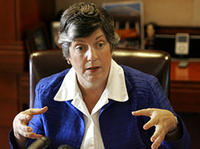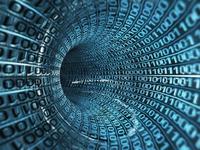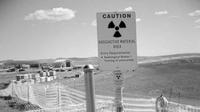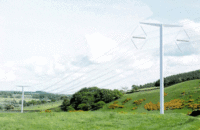-
Napolitano: hackers "came close" to shutting down critical infrastructure

On Thursday DHS Secretary Janet Napolitano revealed that hackers have “come close” to shutting down parts of the nation’s critical infrastructure; at a press conference Napolitano stated that hackers have attempted to infiltrate financial systems, transportation networks, and other key elements of U.S. critical infrastructure, making cyberattacks on these facilities one of her top concerns
-
-
NIST releases smart grid framework update
An expanded list of standards, new cybersecurity guidance and product testing proposals are among the new elements in an updated roadmap for Smart Grid interoperability released yesterday for public comment by the National Institute of Standards and Technology (NIST)
-
-
Also noted
Water Distribution Systems: A Potential Terrorist Tactic | Austrian student fights Facebook over privacy | Cyber attacks hit Japan diplomatic missions | DoD, VA increase rabies-prevention efforts | Economic troubles take toll on U.S. police departments | Ten years on, Patriot Act remains controversial
-
-
College chemical labs unsafe, report finds
A recently released report found that college laboratories with their dangerous mix of volatile chemicals pose a danger to students and employees
-
-
Leeds sludge experts target nuclear waste
Researchers from the University of Leeds have teamed up with Sellafield Ltd. to clean up radioactive sludge produced by the U.K. nuclear industry; the newly formed Sludge Center of Expertise will play a key role in describing the behavior of the sludge wastes that have arisen after years of operation at Sellafield and other nuclear sites across the United Kingdom
-
-
Formation of Senate and House rare Earth minerals caucuses urged
The Association for Rare Earth yesterday urged the creation of Senate and House caucuses to focus on the challenges of securing supplies of rare Earth elements for U.S. high technology, clean energy, and defense communities
-
-
New Stuxnet-like virus hits Europe

The dreaded Stuxnet worm, which was the first instance of a computer virus creating physical damage, may have spawned a dangerous new piece of malware; researchers at Symantec believe they have discovered a new computer virus that uses many of the same techniques in European computers
-
-
Decontaminating Japan to cost at least $13 billion
Last week Japanese Prime Minister Yoshihiko Noda announced the government will spend at least 1 trillion yen, or $13 billion, to decontaminate areas affected by nuclear radiation from the Fukushima Daiichi atomic power plant
-
-
FBI better prepared to thwart bioterror attack on U.S.
The FBI says that in the decade since deadly anthrax spores were sent through the mail in 2001, killing five people and sickening twenty-two others, it has made significant advances in efforts to prevent and identify bio-terror threats
-
-
Squirrel causes explosion, knocks out Connecticut town’s power

Last week more than 14,000 homes in Greenwich, Connecticut were left without power after a squirrel managed to find its way into a substation and caused an explosion that sent flames shooting 150 feet into the air
-
-
A precursor to the next Stuxnet discovered
Symantec reports the discovery of a sample malware that appeared to be very similar to Stuxnet, the malware which wreaked havoc in Iran’s nuclear centrifuge farms last summer; the new malware — dubbed Duqu — is essentially the precursor to a future Stuxnet-like attack; the threat was written by the same authors (or those that have access to the Stuxnet source code); Duqu gathers intelligence data and assets from entities, such as industrial control system manufacturers, in order more easily to conduct a future attack against another third party
-
-
Improving critical infrastructure protection
Salt River Project (SRP), the U.S. third-largest public power utility, recently announced that it had teamed with Quantum Secure to help protect its facilities
-
-
Highly concentrated radiation found in Tokyo
A recent study indicates that radiation from the Fukushima Daiichi nuclear power plant, which suffered a meltdown following the 11 March earthquake and tsunami in Japan, has spread further and was more concentrated than previously thought
-
-
Cold War nuclear legacy challenges science, society

Fifty years of U.S. nuclear weapons production, and government-sponsored nuclear energy research and production, generated contaminated soil and groundwater covering two million acres in thirty-five states; for most of that period, the U.S. government did not have environmental structures, technologies, or infrastructure to deal with the problem
-
-
Danish designer wins completion for new U.K. pylons

There are 88,000 pylons in the United Kingdom, carrying 400,000 volts of electricity over thousands of miles across the country; the design of the pylons has barely changed in eighty years – and a winner has just been announced in the competition for a new pylon design
-
More headlines
The long view
Water Wars: A Historic Agreement Between Mexico and US Is Ramping Up Border Tension
As climate change drives rising temperatures and changes in rainfall, Mexico and the US are in the middle of a conflict over water, putting an additional strain on their relationship. Partly due to constant droughts, Mexico has struggled to maintain its water deliveries for much of the last 25 years, deliveries to which it is obligated by a 1944 water-sharing agreement between the two countries.
Trump Is Fast-Tracking New Coal Mines — Even When They Don’t Make Economic Sense
In Appalachian Tennessee, mines shut down and couldn’t pay their debts. Now a new one is opening under the guise of an “energy emergency.”
Smaller Nuclear Reactors Spark Renewed Interest in a Once-Shunned Energy Source
In the past two years, half the states have taken action to promote nuclear power, from creating nuclear task forces to integrating nuclear into long-term energy plans.
Keeping the Lights on with Nuclear Waste: Radiochemistry Transforms Nuclear Waste into Strategic Materials
How UNLV radiochemistry is pioneering the future of energy in the Southwest by salvaging strategic materials from nuclear dumps –and making it safe.
Model Predicts Long-Term Effects of Nuclear Waste on Underground Disposal Systems
The simulations matched results from an underground lab experiment in Switzerland, suggesting modeling could be used to validate the safety of nuclear disposal sites.
